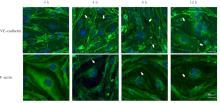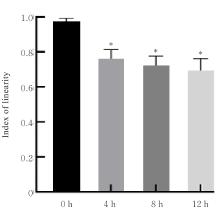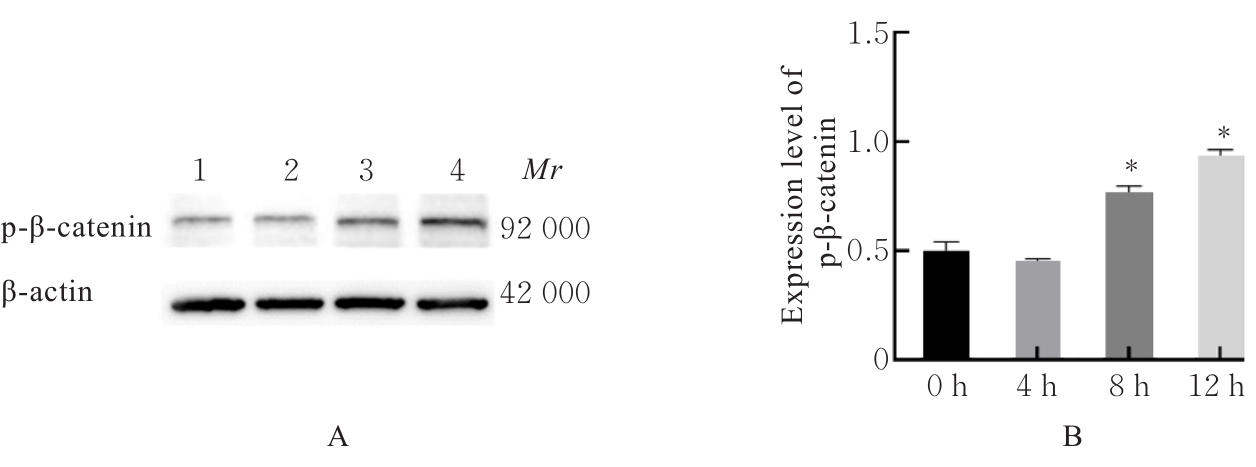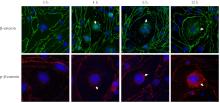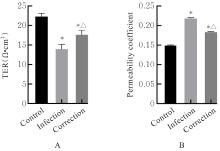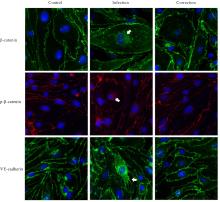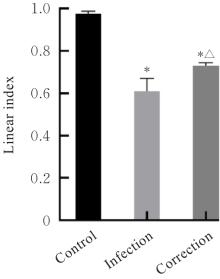| 1 |
LETCHWORTH G J, RODRIGUEZ L L, DEL CBARRERA J. Vesicular stomatitis[J]. Vet J, 1999, 157(3): 239-260.
|
| 2 |
COOPER D, WRIGHT K J, CALDERON P C, et al. Attenuation of recombinant vesicular stomatitis virus-human immunodeficiency virus type 1 vaccine vectors by gene translocations and g gene truncation reduces neurovirulence and enhances immunogenicity in mice[J]. J Virol, 2008, 82(1): 207-219.
|
| 3 |
TOMCZYK T, WRÓBEL G, CHABER R, et al. Immune consequences of in vitro infection of human peripheral blood leukocytes with vesicular stomatitis virus[J]. J Innate Immun, 2018, 10(2): 131-144.
|
| 4 |
黄焰霞, 刘艾然, 杨 毅. 内皮细胞间黏附连接调节机制的研究进展[J]. 中国危重病急救医学, 2013, 25(3): 190-192.
|
| 5 |
张 新, 巨朝娟, 金 鑫, 等. 外源性神经生长因子对形觉剥夺性近视豚鼠巩膜组织的保护作用及其机制[J]. 吉林大学学报(医学版), 2021, 47(6): 1455-1461.
|
| 6 |
FINKELSHTEIN D, WERMAN A, NOVICK D, et al. LDL receptor and its family members serve as the cellular receptors for vesicular stomatitis virus[J]. Proc Natl Acad Sci U S A, 2013, 110(18): 7306-7311.
|
| 7 |
王海英, 武心洁, 苑金香, 等. Wnt5a/Frizzled-2/Ca2+和Wnt3a/Frizzled通路的生理及病理学研究进展[J]. 吉林大学学报(医学版), 2021, 47(3): 811-818.
|
| 8 |
孙成彪. 犬干扰素α/RTB重组融合蛋白制备及抗病毒活性研究[D]. 北京:军事科学院, 2020.
|
| 9 |
CHEN W, YU H T, SUN C B, et al. γ-Bungarotoxin impairs the vascular endothelial barrier function by inhibiting integrin α5[J]. Toxicol Lett, 2023, 383: 177-191.
|
| 10 |
CHEN Y, TANG D, ZHU L J, et al. hnRNPA2/B1 ameliorates LPS-induced endothelial injury through NF-κB pathway and VE-cadherin/β-catenin signaling modulation in vitro [J]. Mediators Inflamm, 2020, 2020: 6458791.
|
| 11 |
LIU L, DODD S, HUNT R D, et al. Early detection of cerebrovascular pathology and protective antiviral immunity by MRI[J]. Elife, 2022, 11: e74462.
|
| 12 |
HASHIMOTO R, TAKAHASHI J, SHIRAKURA K, et al. SARS-CoV-2 disrupts respiratory vascular barriers by suppressing Claudin-5 expression[J]. Sci Adv, 2022, 8(38): eabo6783.
|
| 13 |
MACIEL R A P, CUNHA R S, BUSATO V, et al. Uremia impacts VE-cadherin and ZO-1 expression in human endothelial cell-to-cell junctions[J]. Toxins, 2018, 10(10): 404.
|
| 14 |
MISHRA J, DAS J K, KUMAR N. Janus kinase 3 regulates adherens junctions and epithelial mesenchymal transition through β-catenin[J]. J Biol Chem, 2017, 292(40): 16406-16419.
|
| 15 |
MCEVOY E, SNEH T, MOEENDARBARY E, et al. Feedback between mechanosensitive signaling and active forces governs endothelial junction integrity[J]. Nat Commun, 2022, 13(1): 7089.
|
| 16 |
PUERTA-GUARDO H, BIERING S B, DE SOUSA F T G, et al. Flavivirus NS1 triggers tissue-specific disassembly of intercellular junctions leading to barrier dysfunction and vascular leak in a GSK-3β-dependent manner[J]. Pathogens, 2022, 11(6): 615.
|
| 17 |
WENG J, CHEN Z F, LI J Y, et al. Advanced glycation end products induce endothelial hyperpermeability via β-catenin phosphorylation and subsequent up-regulation of ADAM10[J]. J Cell Mol Med, 2021, 25(16): 7746-7759.
|
| 18 |
SCHULTE G, BRYJA V. WNT signalling: mechanisms and therapeutic opportunities[J]. Br J Pharmacol, 2017, 174(24): 4543-4546.
|
| 19 |
黄晓雯. 脑血管内皮Wnt/β: catenin信号通路对外周炎症导致的血脑屏障损伤的介导作用和机制研究[D]. 北京: 中国科学院大学, 2021.
|
| 20 |
SONG S S, HUANG H C, GUAN X D, et al. Activation of endothelial Wnt/β-catenin signaling by protective astrocytes repairs BBB damage in ischemic stroke[J]. Prog Neurobiol, 2021, 199: 101963.
|
| 21 |
GUO R L, WANG X, FANG Y N, et al. rhFGF20 promotes angiogenesis and vascular repair following traumatic brain injury by regulating Wnt/β-catenin pathway[J]. Biomedecine Pharmacother, 2021, 143: 112200.
|
| 22 |
MARTIN M, VERMEIREN S, BOSTAILLE N, et al. Engineered Wnt ligands enable blood-brain barrier repair in neurological disorders[J]. Science, 2022, 375(6582): eabm4459.
|
| 23 |
NUSSE R, CLEVERS H. Wnt/β-catenin signaling, disease, and emerging therapeutic modalities[J]. Cell, 2017, 169(6): 985-999.
|
 ),Yongmei LI1(
),Yongmei LI1( )
)


